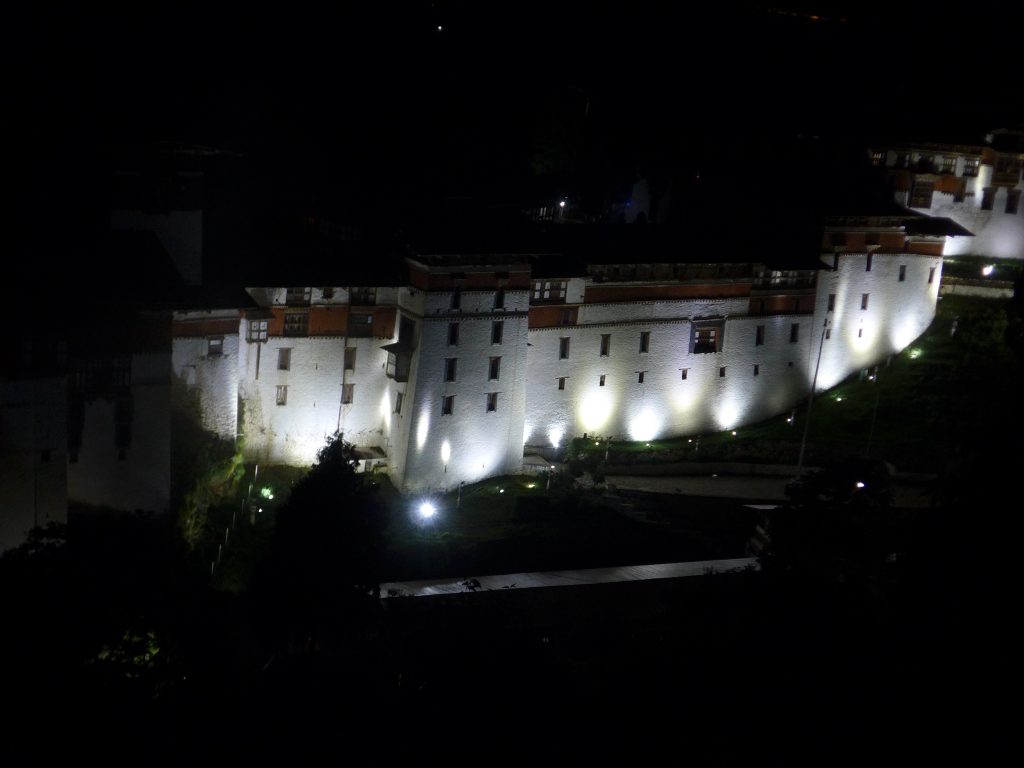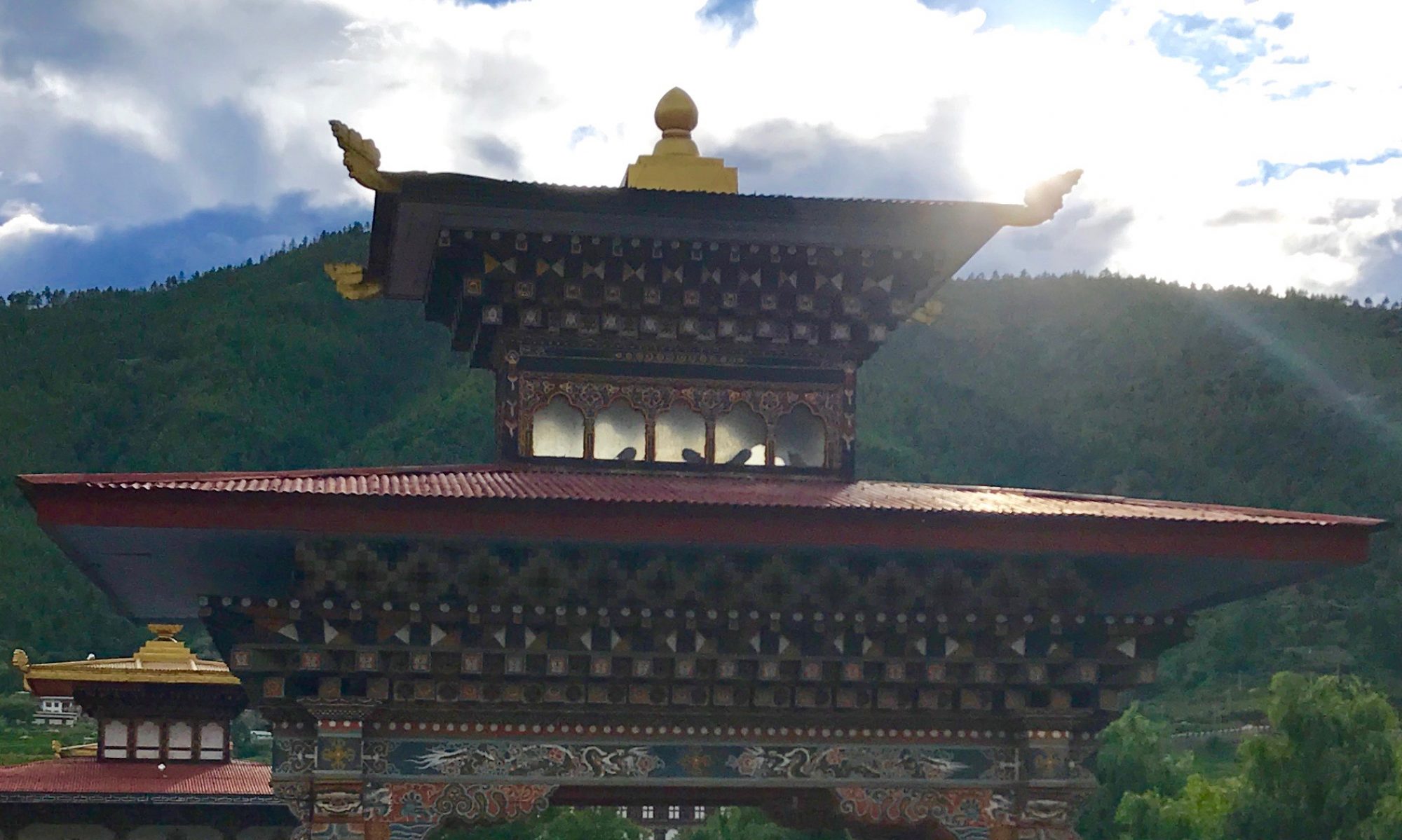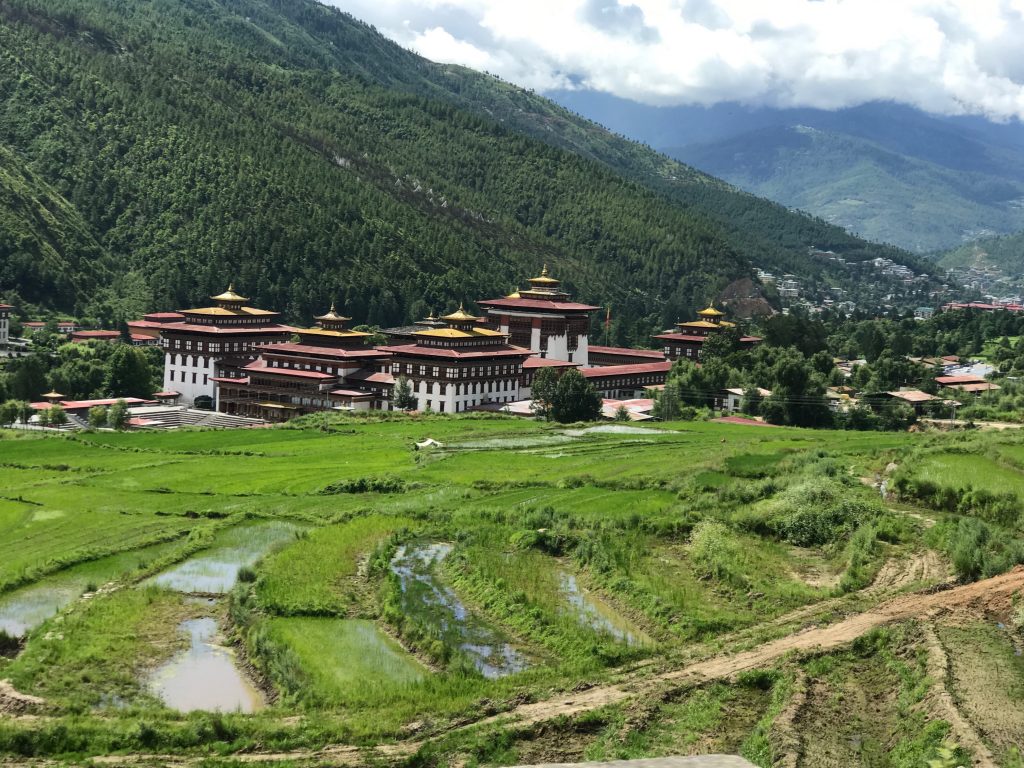 The road to Bumthang winds above the Thimphu dzong and the surrounding rice fields, past Bhutanese on cell phones and Indian workers laboring on infrastructure projects.
The road to Bumthang winds above the Thimphu dzong and the surrounding rice fields, past Bhutanese on cell phones and Indian workers laboring on infrastructure projects.
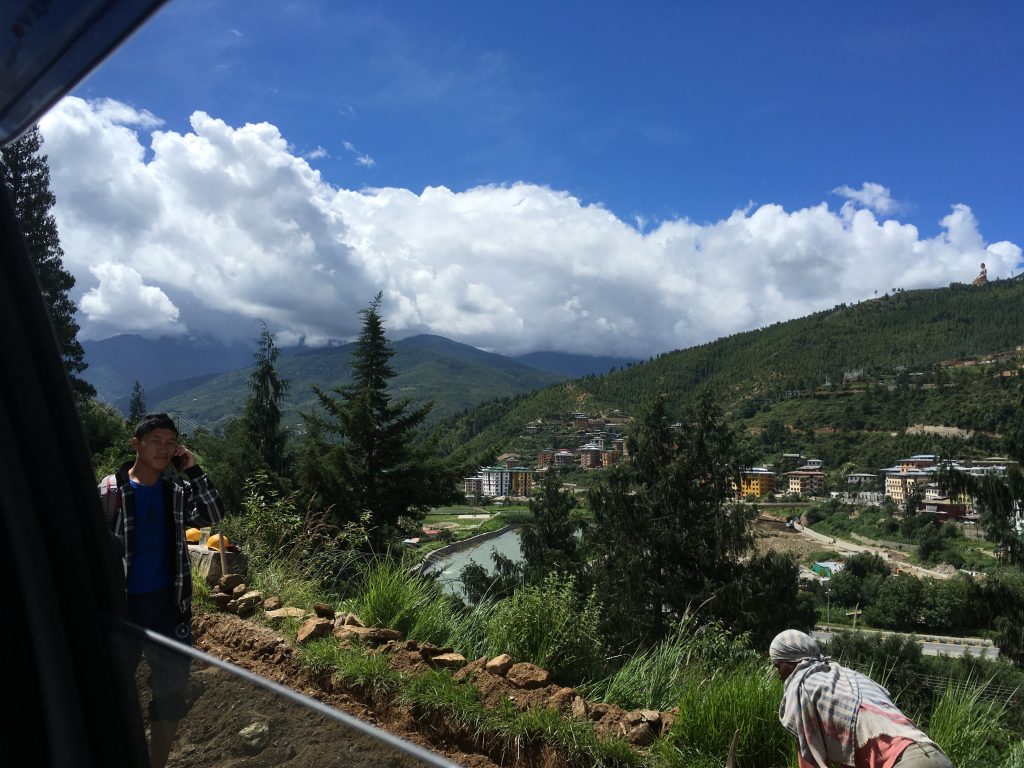
After about an hour of winding road, we arrive at the misty height of Dochu La.
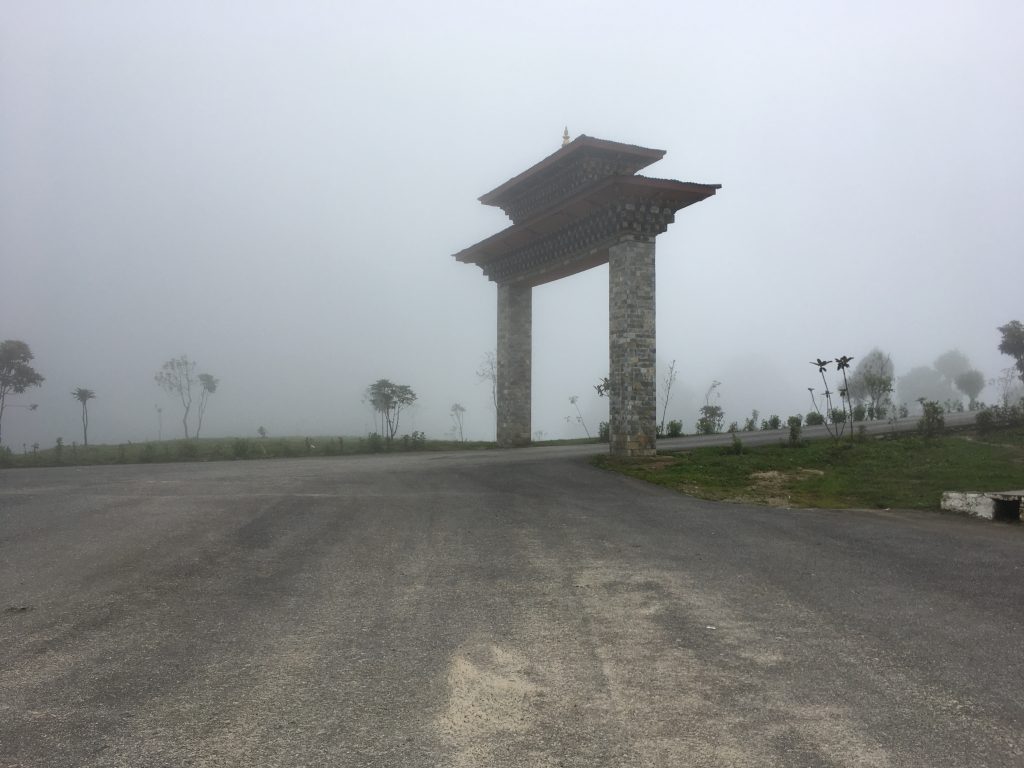
Its 108 chortens were built in 2005 to atone for the loss of life in a military campaign to flush Assamese militants out of southern Bhutan (or in thanks that the fourth and fifth kings both survived the campaign, depending on the source of the explanation).
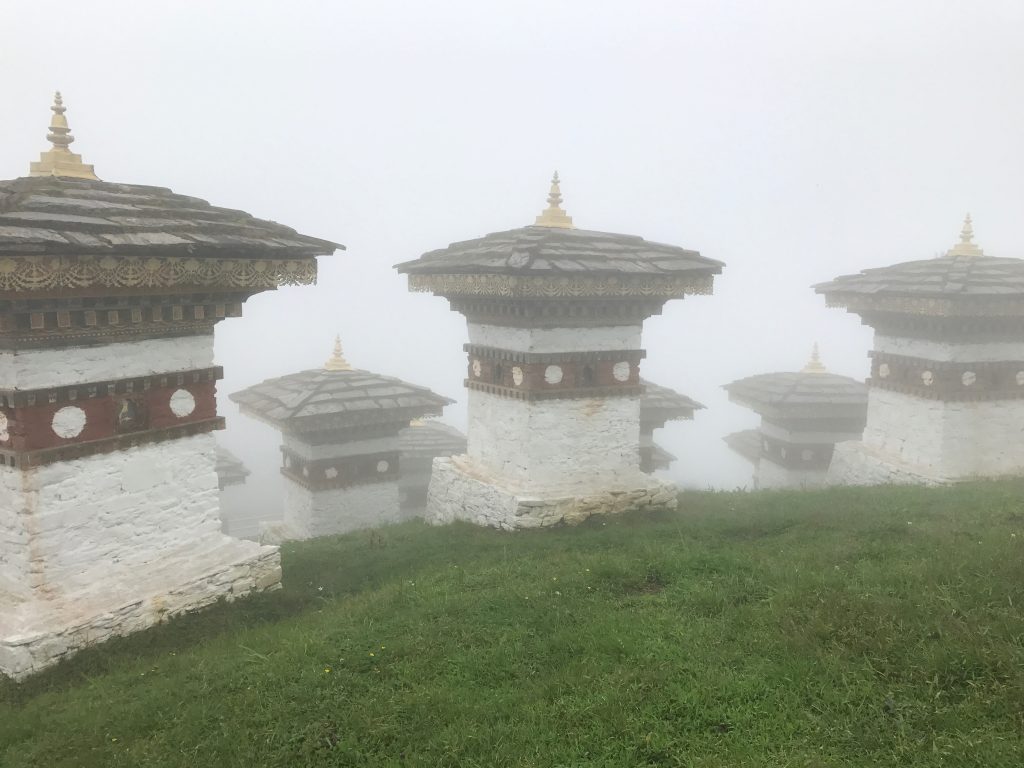
Zoë loved the trees through the fog.
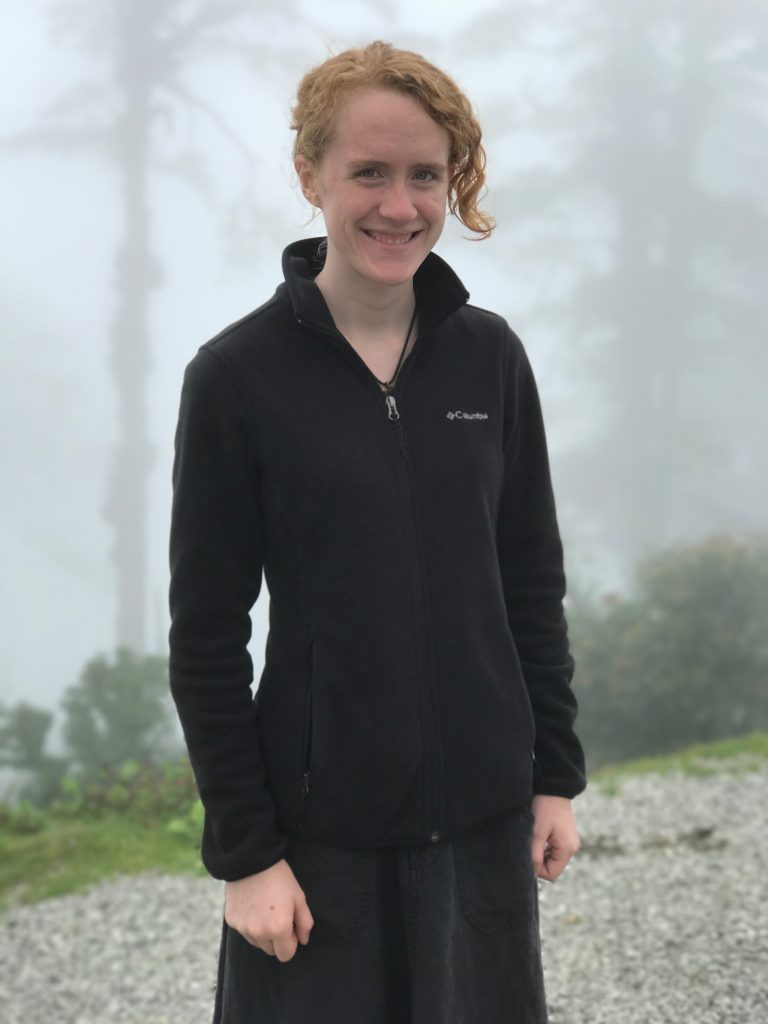
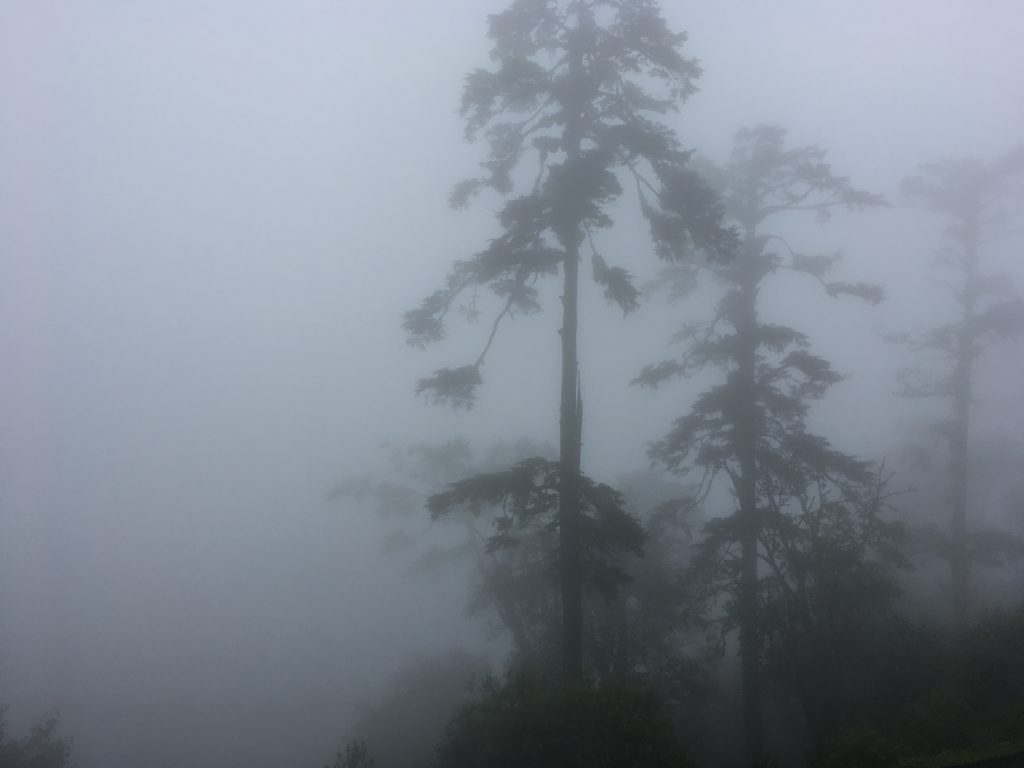
Jeremy lost himself in the mists around the chortens.
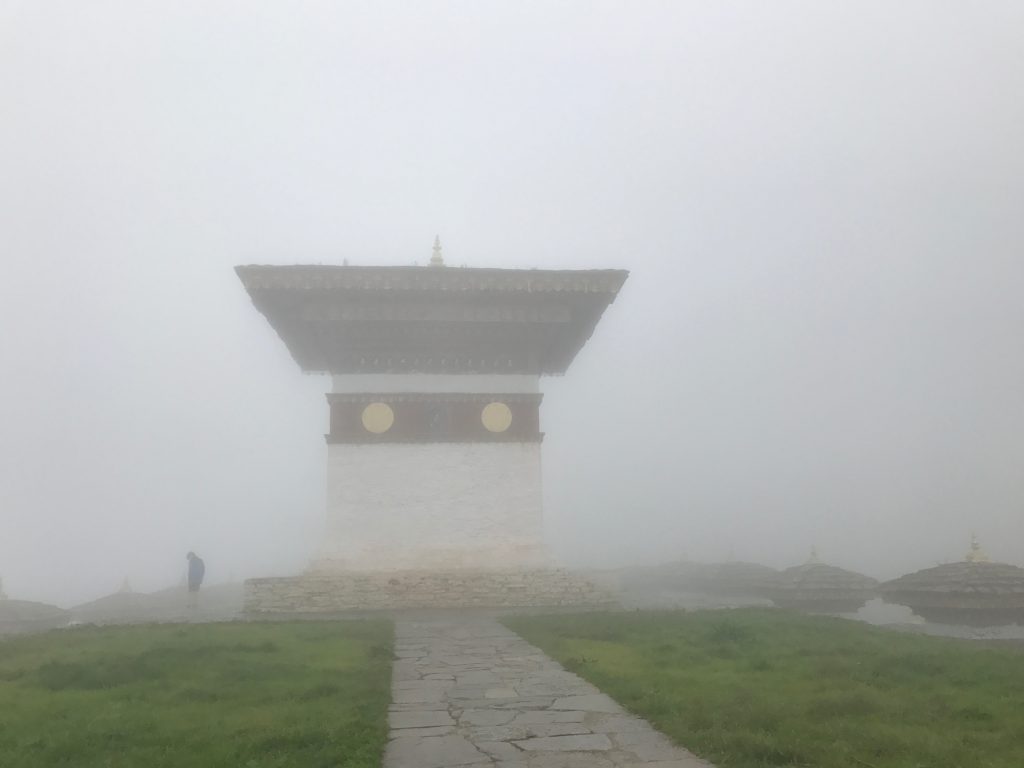
James was fascinated by those with whom we shared the space.
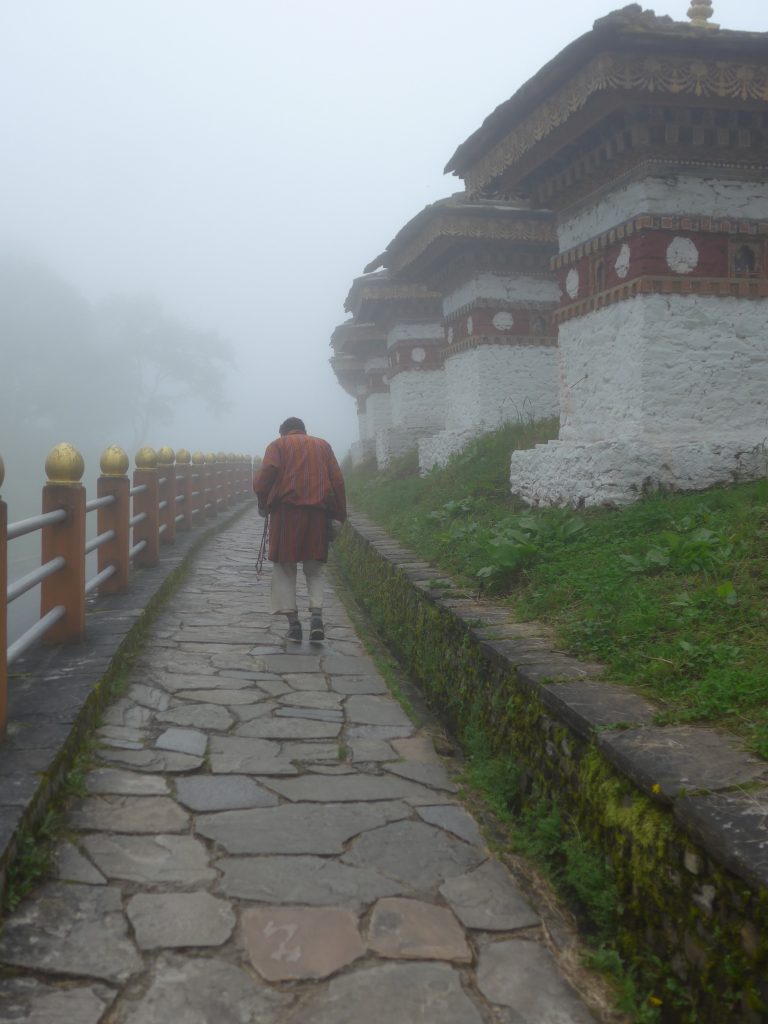
After Dochu La, the road dips through rhododendrons, passing the Royal Botanical Park. Across the gorge, we saw goembas, some of which Ugyen couldn’t identify.
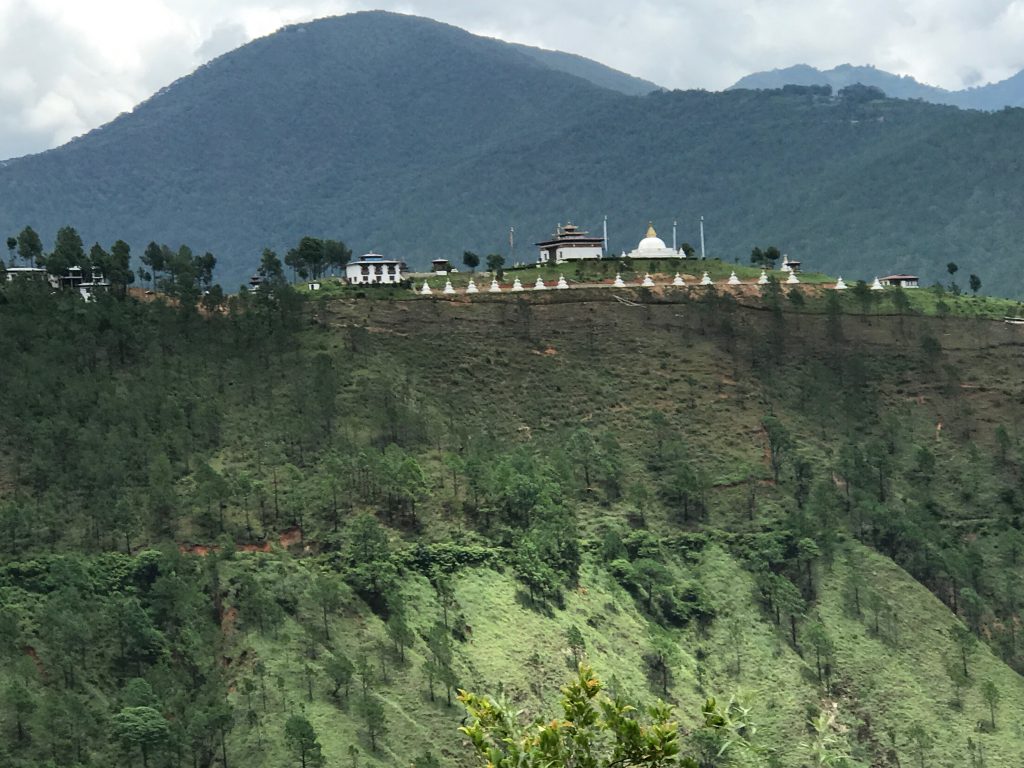
At the bottom of the gorge lies the mostly modern, self-contained city of Wangdrup Phodrang, once the country’s second capital.
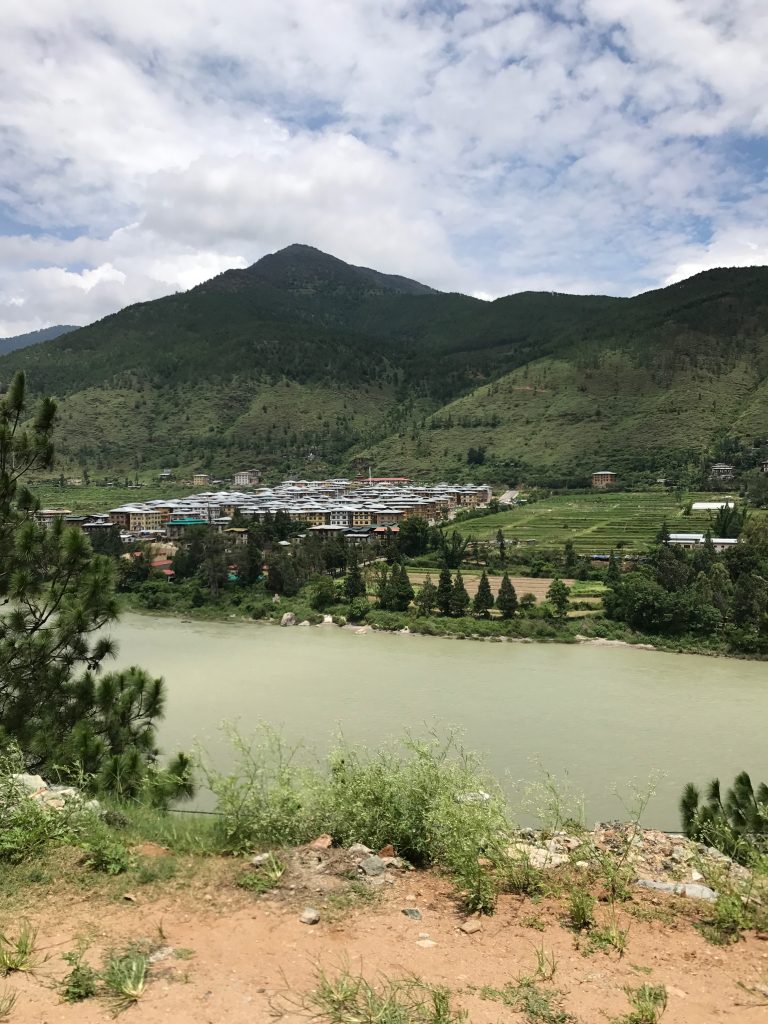
The dzong was found by Zhabdrung Ngawang Namgyal in 1638, but it caught fire in 2012 and is still being rebuilt.
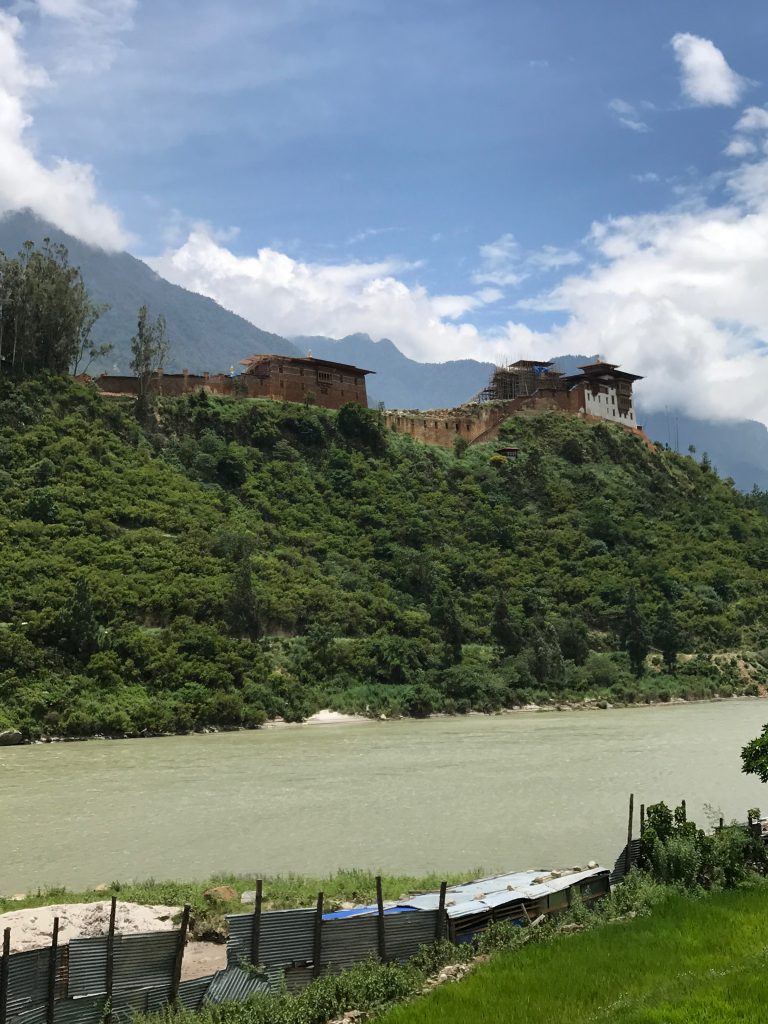
We crossed the river close under the dzong, and drove into Wangdi (as it is informally known). Ugyen pulled off onto a little dirt road within the city to refuel: James was struck by the fire extinguishers the station was relying on in case of fire or explosion.
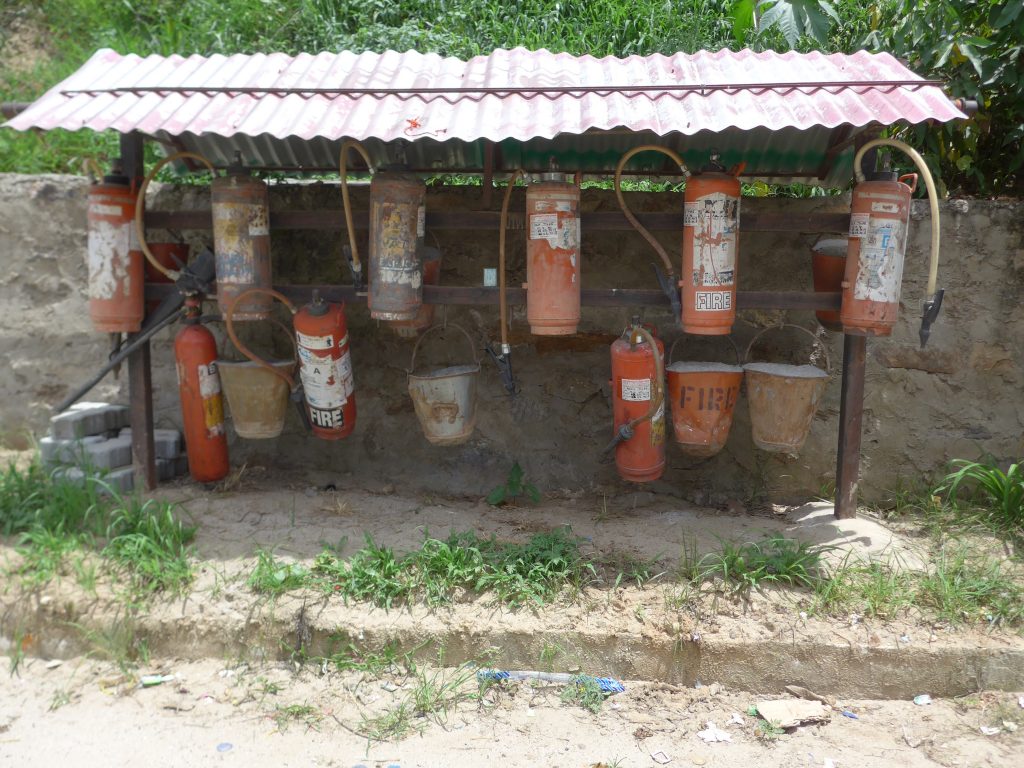
Then, as we climbed the mountains toward Pele La (the gateway to central Bhutan), the roadworks began.
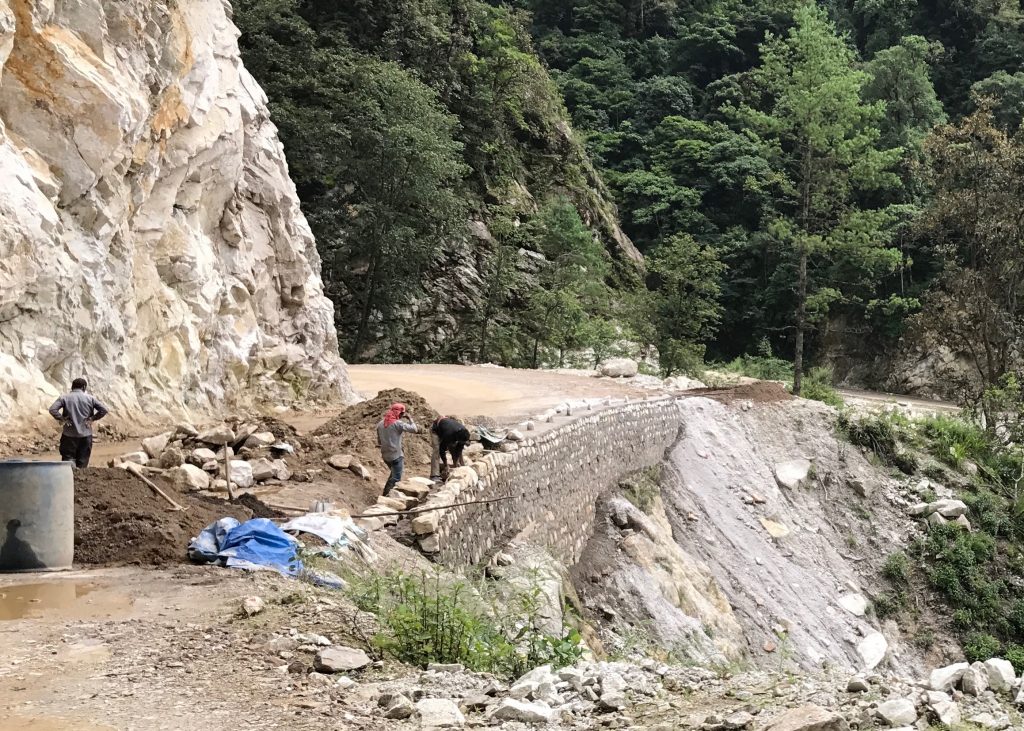
Bhutan is engaged in widening its one-lane national highway, but in the short term, and in the monsoon season, this makes transportation challenging in the extreme.
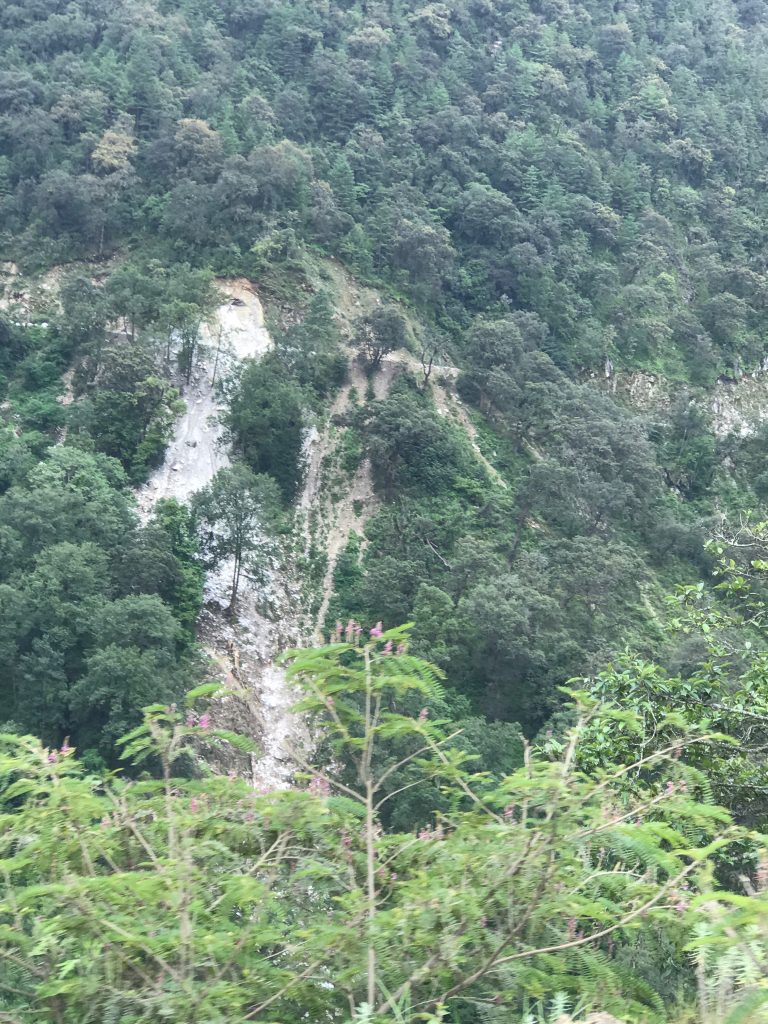
I spent far too much time taking photos of the “are we going to survive this?” variety, also known as “landslide porn.”
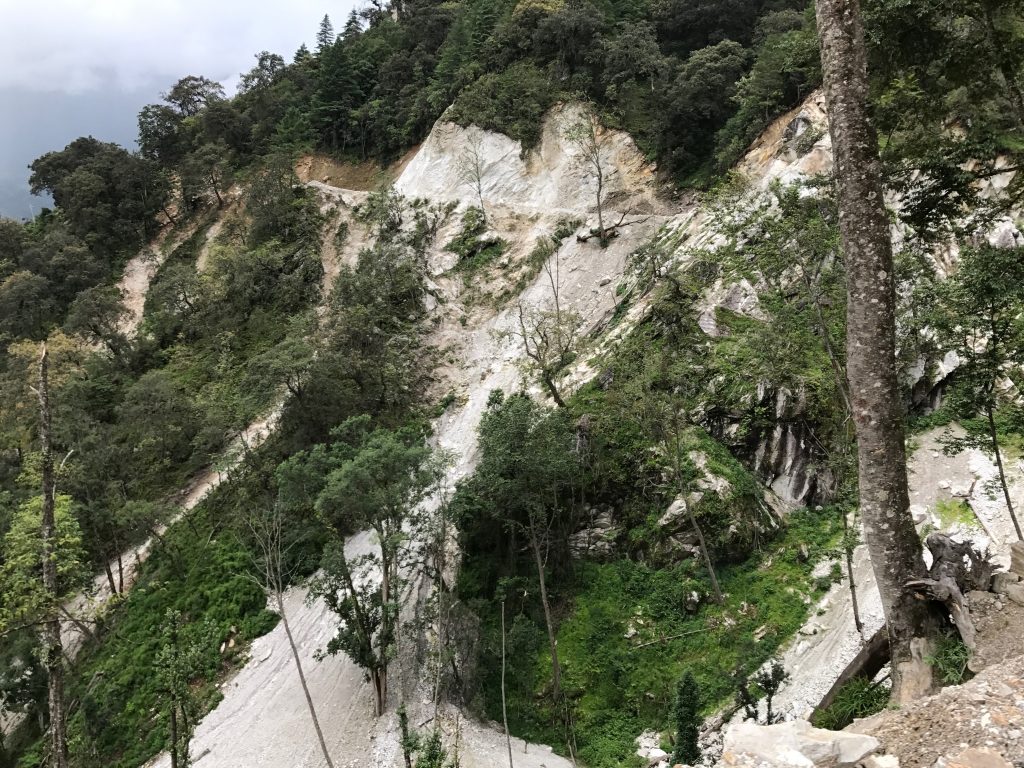
We were also struck by the living conditions for the people working on the roads, as well as the ingenious recycling of the cans of road tar.
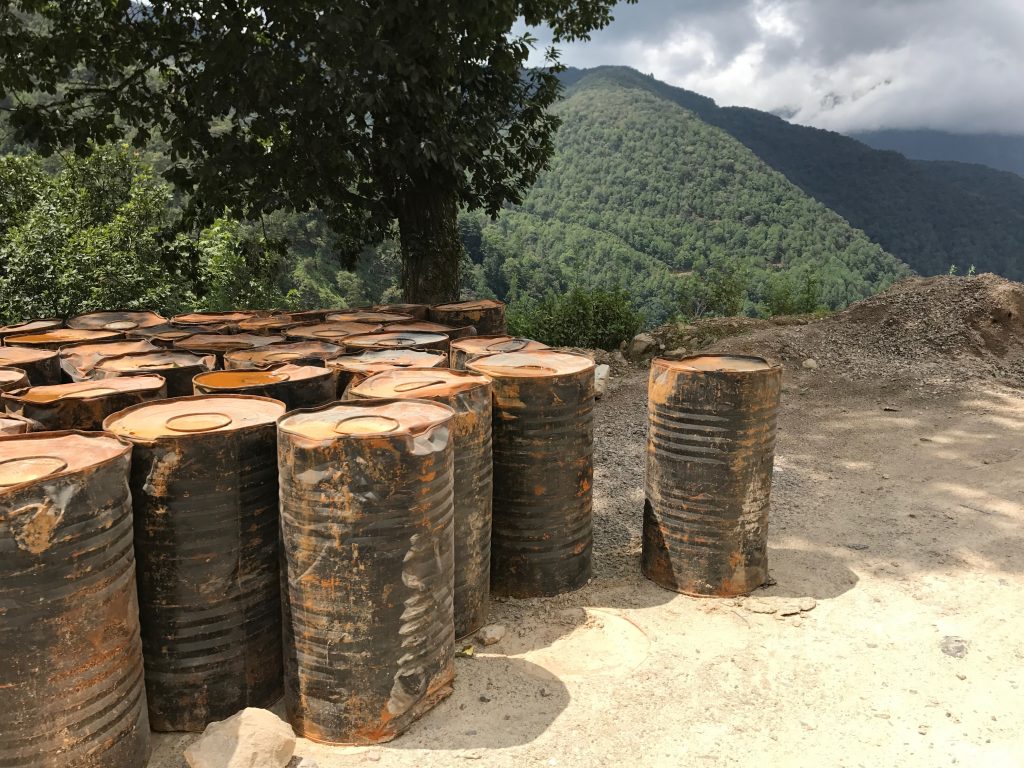
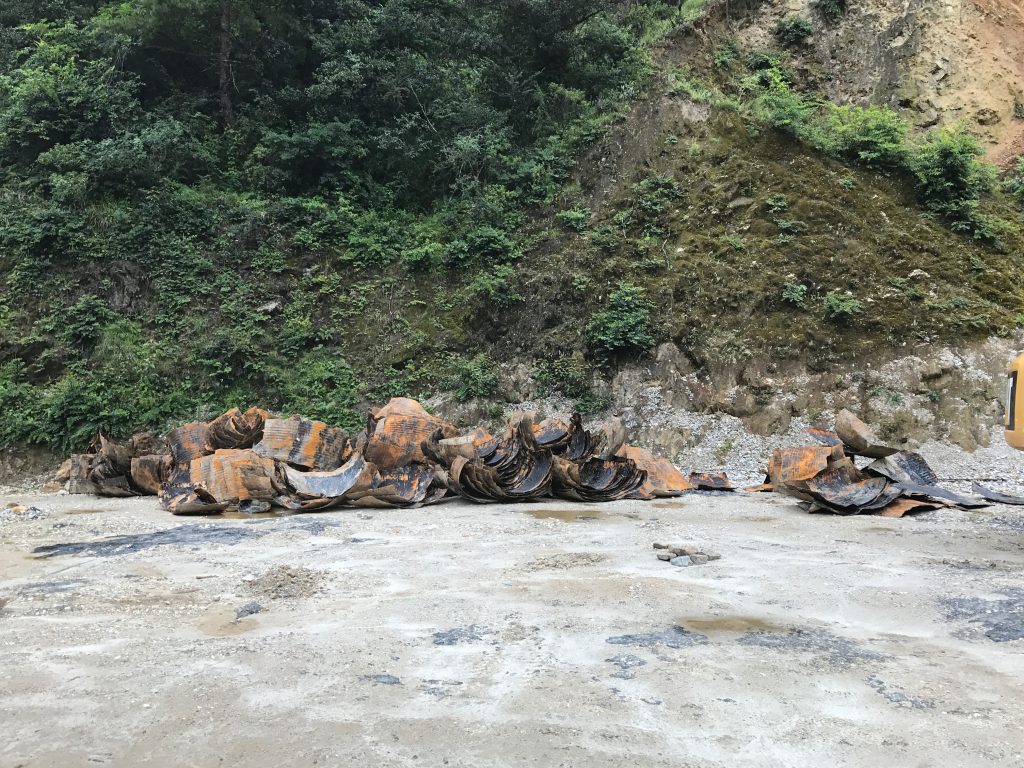
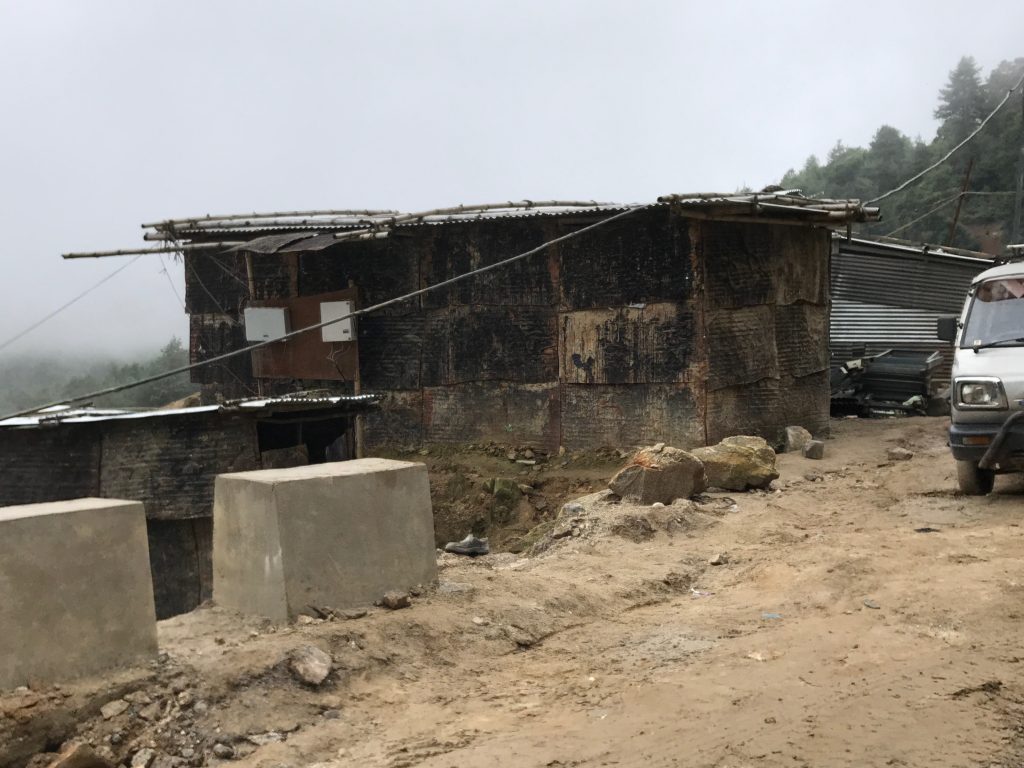
As James put it: “I never imagined the main road linking two of the major cities would be a single-track dirt road cut into the mountains. Add to that basic framework a host of challenging ingredients: mud, landslides, road-works (very brave guys on caterpillar diggers 80 feet up the cliff-face busy cutting away the very toehold on which their machine is resting), more mud, mist/rain, and a road surface that resembles a choppy sea.
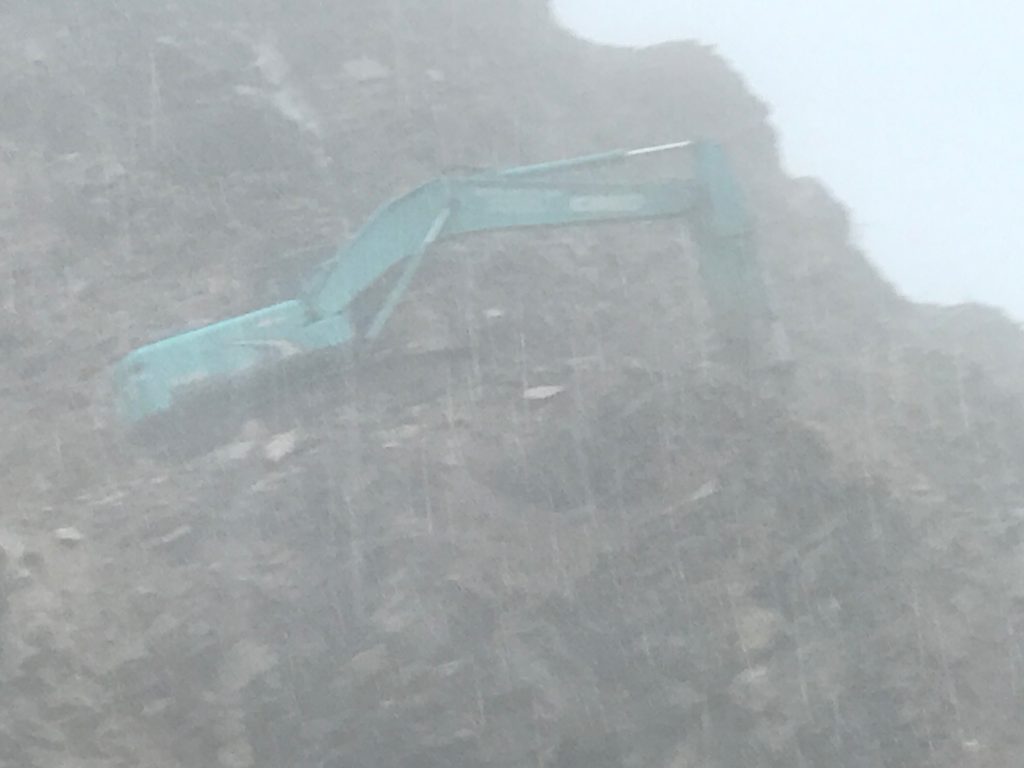
“The trip was slow and endlessly jolting, but also remarkably beautiful with the mist smoking up through the trees, tall waterfalls, stream-driven prayer wheels, and bright prayer flags and temples in the villages we passed through.”
James enjoyed the drive more than Ugyen did. At one point, Ugyen asked what James thought of the drive and James was characteristically upbeat. James asked Ugyen what he thought, and Ugyen paused for quite a while. “Ugyen is wishing we had taken the India road,” I said, and he nodded, a little grimly. A few hours later, he was more direct. “Sir, when sir returns to Thimphu, I hope he will take the India road.”
Coming down from Pele La, we passed the Chendebji Chorten, modeled on a similar chorten in Kathmandu. Evidently, it’s the westernmost chorten of a trail of chortens built by early Buddhist missionaries.
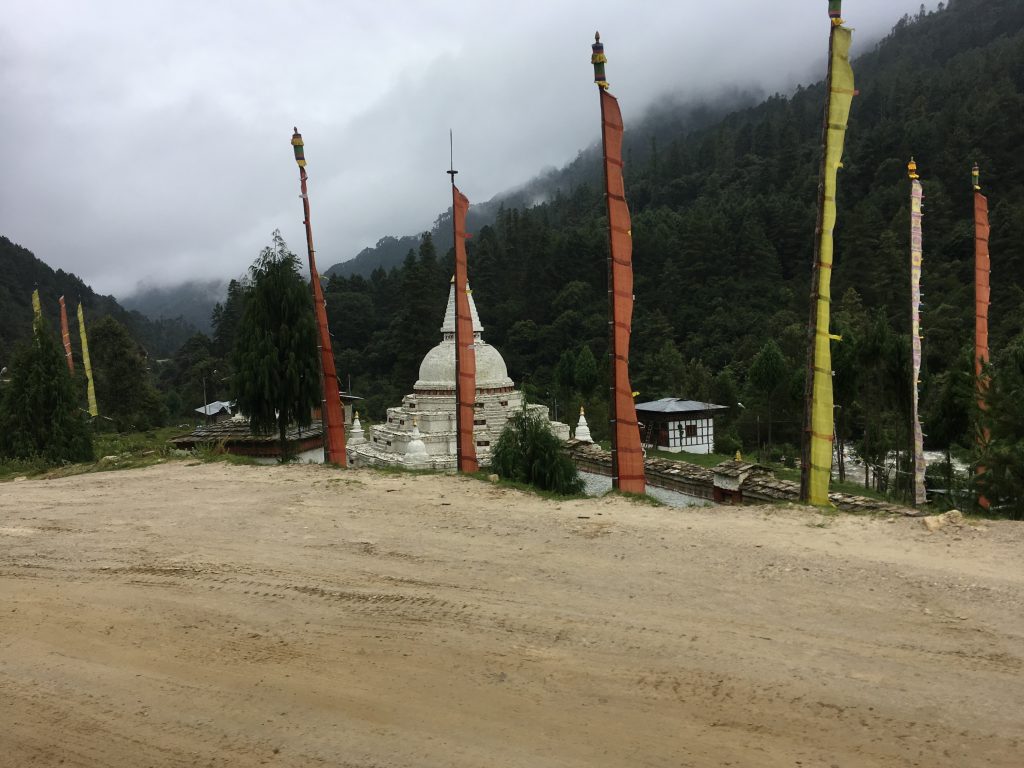
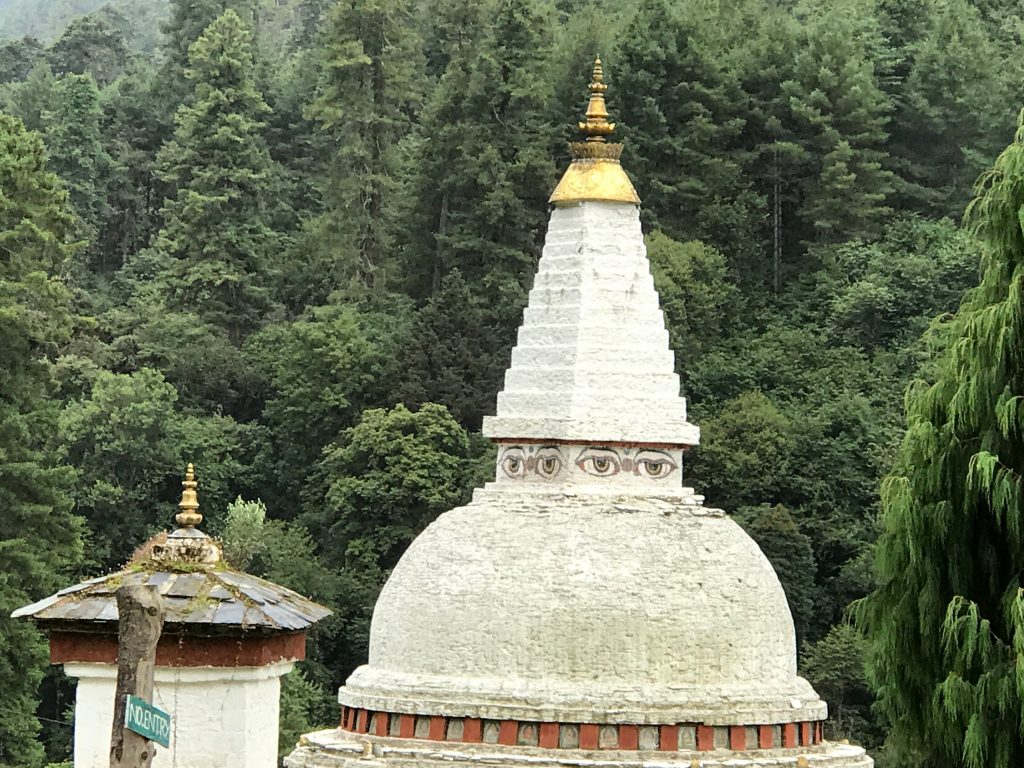
Close to Trongsa, we joined a collection of vehicles waiting for a caterpillar digger to clear the road. We waited for over an hour as night fell. I was impressed with the way the digger simply shoved the boulders over the edge, into the rest of the landslide. (If the video will play, you can see this in action.)
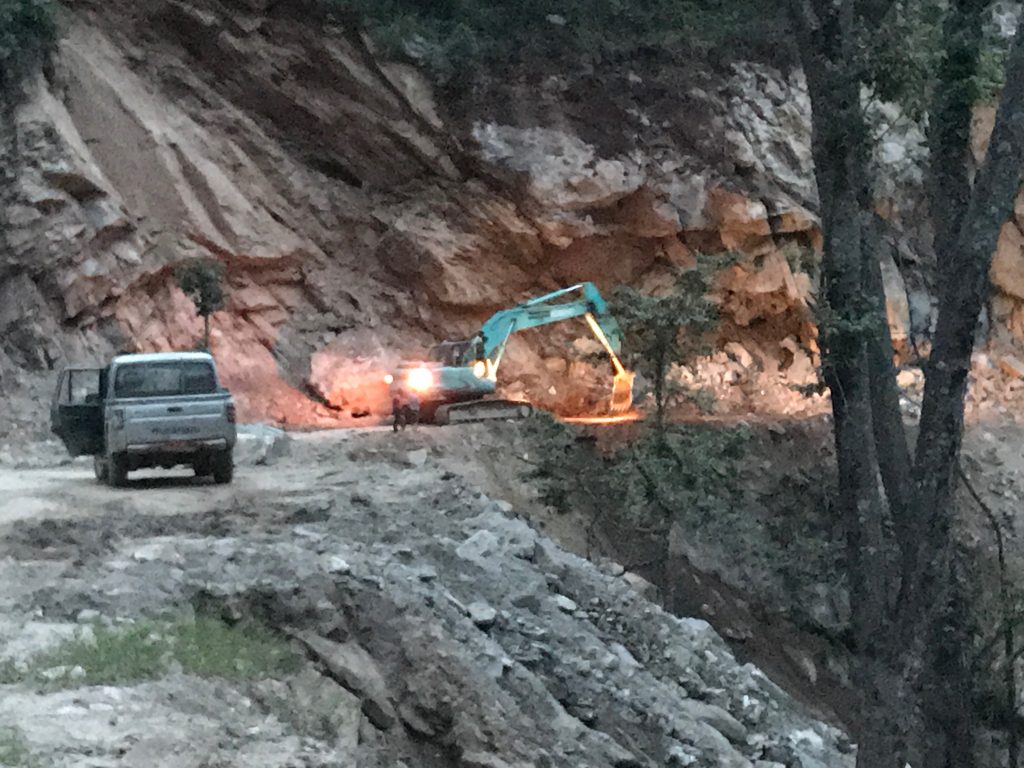
[waiting on video]
We arrived in Trongsa after dark, having abandoned all hope of reaching Bumthang that night. While waiting for the road to clear, we had scouted hotel possibilities in Lonely Planet. Then, after an odd and oddly alienating passage through a checkpoint at a bridge over the roaring river, we found ourselves searching through the dark empty streets of Trongsa for something resembling a hotel. On our way out of town, we saw a sign for one of the named hotels. Inside the reception area was a lone man with a small light who said he might have a room for us. As we agreed to take a look, the lights went out. He picked up a lantern, unperturbed either by the blackout or Jeremy’s gasp, and we followed him out the door, down the rainy street to the next door and up some stairs, muddied by our footsteps. After we agreed to take the room, effectively sight unseen, the lights came back on. We ordered supper (noodles and veg, rice and veg), which they brought to the room. Zoë and I took the dishes back later, and after one sniff of heavy mold, we decided that instead of eating breakfast in the dining room as agreed, we would like our breakfast up in the room again.
Then James discovered the views of the Trongsa dzong out of our back window.
